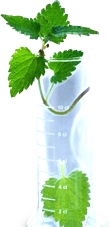



Author(s): K. C. Ajithkumar, K. Pramod*
A reasonable number of reactions employ formaldehyde and a very good example of such a reaction is the preparation of drug-DNA adducts (DDA). Though some methods have been reported for removal of formaldehyde from aqueous solutions, they present a complex procedure. In the present study we evaluated the process of simple dialysis using membrane for the removal of residual formaldehyde. Hantzsch reaction was employed for the quantification of formaldehyde during the studies. The dialysis method was found to be an efficient method for removal of residual formaldehyde from aqueous solutions. It is anticipated that the method would prove to be very useful in removal of unreacted formaldehyde from aqueous reaction mixtures. The method is expected to be an important step in the purification of drug-DNA adducts